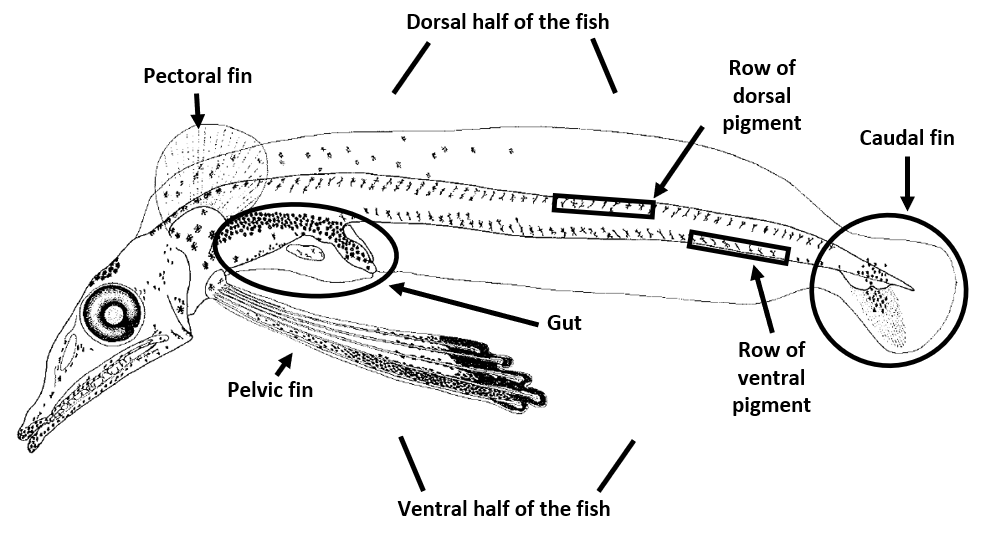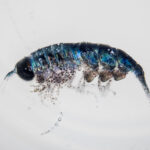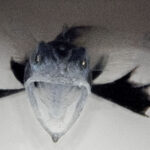I.D. Antarctica – Mystery Creature #3
Hello again! I am especially excited this week because we have caught some larval fishes during a net tow in the bay pictured above.
Most adult fishes in the Southern Ocean are benthic, which means they live near the sea floor. However, many of these fishes have pelagic larval stages. So, adults lay their eggs on the sea floor, the eggs eventually hatch, and the larval fishes move to the upper ~200 meters of the ocean. There are several reasons for this vertical migration: there are often less predators near the surface, the currents at the surface can be stronger which beneficially transport larvae to new regions, and larvae are interested in feeding on zooplankton in the epipelagic zone. (Oceanic zone diagram). Hyperiid amphipods, like the one you identified from last week, are one kind of zooplankton eaten by large larval fishes, juveniles, and adults.
Before we can start, I need to briefly go over some fish anatomy in the drawing below. This drawing is not the fish we are trying to identify, it is just an example. There are several different fins and areas on the body of a fish, and they all have specific names. For example, the top half of the fish is also called dorsal and the bottom half is called ventral. Pigmentation patterns are also important for identification. Pigment is basically another word for small black spots.
(Modified from Kellermann 1990)
So…are you ready for this week’s mystery creature? Here is an underwater picture of one of the fishes. I think I have a general idea of what it is, but we should always double check. Let’s see if we can figure it out using this dichotomous key: IDAntarctica #3 Key. (As a note, parts of this key are modified from Dr. Adolf Kellermann’s Identification Key of Larval Antarctic Fishes (1990). You will be working with the same key that my colleagues and I use in the field to figure out species names!)
**Be sure to carefully compare the fish anatomy diagram to the photograph to make sure you are identifying the right parts (especially the pelvic fin.)






